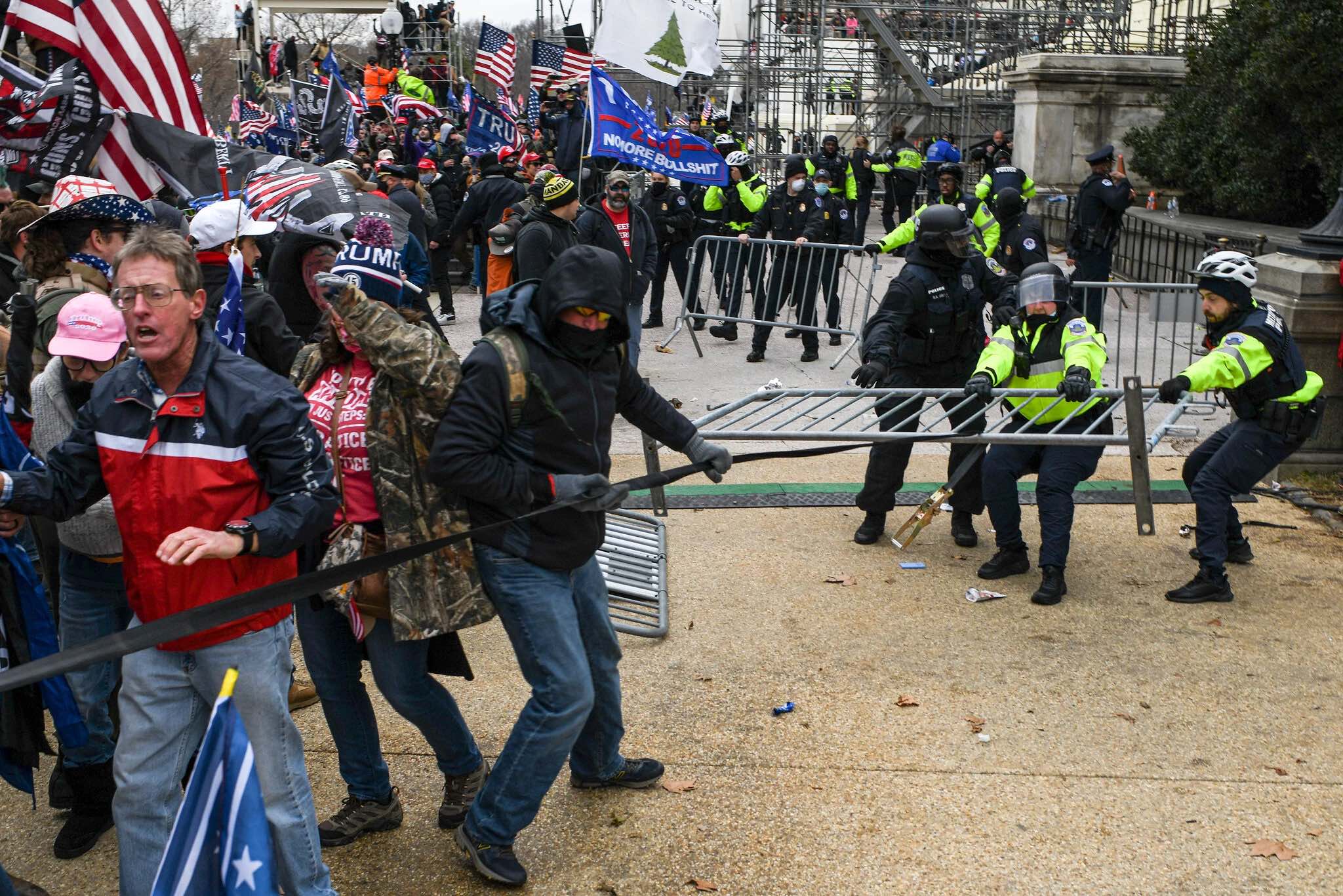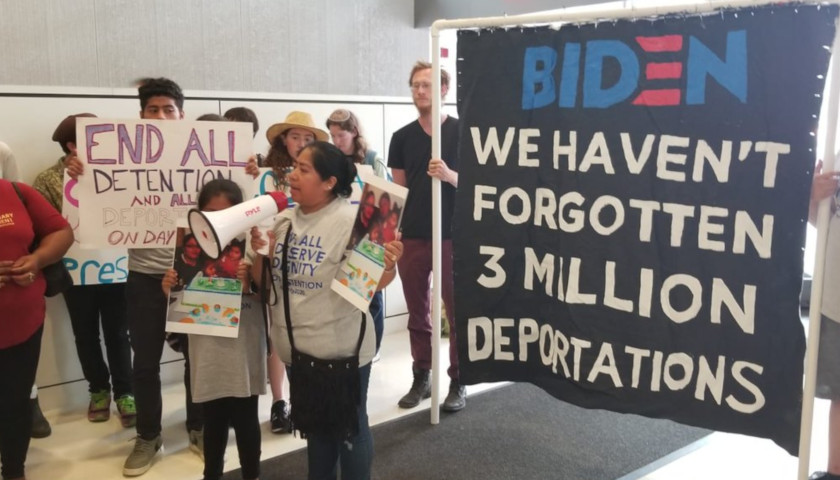Barry Eidlin
Posted January 7, 2021
Failed beer hall putsch re-enactments aside, Donald Trump will be leaving the White House on January 20 if not sooner—at least for the next four years. The focus now shifts to the post-Trump world: what can we expect from the incoming Biden administration?

The short answer is “not much.” While lacking Trump’s predilection for outright nepotism and sycophancy, Biden clearly values personal loyalty, and has made his staffing choices accordingly. His transition team and cabinet picks are chock-full of people who have followed him for years. Many are ascending a few rungs on the career ladder they began climbing during the Obama administration. Others, like proposed Agriculture Secretary Tom Vilsack, are literally taking back the same job they had under Obama.
Personal leadership style aside, the clear message is that the Democratic Party establishment is back in charge. Despite Biden winning election just months after George Floyd’s murder at the hands of the Minneapolis police sparked the largest protest movement in U.S. history, despite the fact that Bernie Sanders’ insurgent candidacy showed that there was a vibrant constituency on the party’s left flank, and despite the fact that unions and other progressive groups gave him the margin of victory in key swing states like Arizona and Pennsylvania, Biden and his team have shown nothing but contempt towards the Left. Instead, they have doubled down on bland centrism. With the possible exception of Green New Deal-supporting Deb Haaland at Interior, every cabinet pick has been a safe establishment choice.
Granted, having competent administrators in charge may be a step up from the assemblage of yes-men and wreckers we saw under Trump. But that should not obscure the fact that Biden’s “back to normal” means a return to corporate-connected technocratic austerity at home paired with efforts to reassert U.S. global domination (AKA “leadership”) abroad. Many problems that pre-dated Trump, like growing inequality, a broken healthcare system, a broken immigration system, racist policing, weakened unions, etc. will persist under Biden. There may be more headway on COVID and climate change, but well short of what’s required. Polling may show strong support for broad progressive policies like paid family leave, student debt forgiveness, Medicare for All, and more, but even with Democrats in control of the presidency and both houses of Congress after the January 5 runoff elections in Georgia, such policies are unlikely to see the light of day.

The one concession to recent movements for social justice is Biden’s greater commitment to racial and gender diversity in his cabinet. It is likely that he will honor his commitment to assemble “the most diverse Cabinet anyone in American history has ever announced.” But this is a commitment grounded in a narrow politics of representation, aimed primarily at putting more female, Black, and Brown faces in charge of advancing the same tired, centrist Democratic policies that will do little to improve the lives of actual women, Black, and Brown people. Biden’s diverse cabinet is packed with Wall Street bankers, corporate board members, lobbyists, consultants, even torture apologists.
Over on the Republican side, Trump’s refusal to concede defeat has created even more chaos within the party. While nobody in party leadership actually believes that Trump won, least of all Trump himself, he is using the “stolen election” fiction as a loyalty test for elected officials, who must show their support for the outgoing president by denying reality.
While some in the party justified their delegitimization of the November 3 election results as a harmless way of humoring the president, the January 6 insurrection at the U.S. Capitol shows how mistaken this was. Defending Trump’s unhinged claims of election fraud and malfeasance gave oxygen to an alternate, fact-free universe where QAnon conspiracy theorists, 4Chan trolls, neo-Confederates, paramilitary groups like the Proud Boys, and outright neo-Nazis could come together to form the ghastly white supremacist mob that stormed the Capitol.
Meanwhile, Trump’s election fraud narrative is serving as a massive grift to siphon more money from his base—$207.5 million since Election Day. Although some within the party may want to leave Trump behind, there is nobody obviously positioned to seize the reins.
The result is a party frozen in place, unable to move beyond Trump but unsure of what it would do even if it could. Trump did enact some cruel and grotesque policies by executive order, and Senate leader Mitch McConnell has been effective in helping Trump pack the courts with right-wing ideologues. But their sole legislative achievement has been the 2017 tax cuts. This is symptomatic of a party that has lost the vision and élan it showed from the 1980s through the 2000s. The once hegemonic conservative narrative of small government, personal responsibility, and prosperity rings hollow in the aftermath of two financial crises, massive job losses, wage stagnation, and the accompanying trauma of instability, illness, and addiction that have literally led to declining life expectancy for large swaths of the U.S. population. In its place, Republicans can only offer naked cash grabs for their wealthy donors, combined with nationalism, racism, and xenophobia for their base, and voter suppression for their opponents.
Taken together, the situation amounts to a crisis of political representation. On the left, Democratic Party elites can ignore or toss aside movement demands in a way that their forebears in the 1960s and 70s could not. On the right, corporate elites may enjoy tax cut windfalls, but at the expense of trade, immigration, and foreign policy that work against many of their interests. And while Trump’s rhetoric about “bringing jobs back” mixed with healthy doses of white nationalism, xenophobia, and conspiracy theories may provide a salve for his base, neither he nor his party are capable of delivering policies that might actually address their material grievances.
More broadly, neither party is capable of articulating a positive political vision that could form the basis of a new hegemonic coalition, along the lines of postwar Keynesianism or the conservative neoliberalism of more recent decades. Partially this is because traditional organizational vehicles for articulating such a vision are absent. Even as corporate economic consolidation proceeds apace, capital remains politically fragmented, incapable of positioning itself as acting in anything approximating a “general interest.”
On the left, the election showed that unions are still capable of shaping politics, particularly with UNITE HERE’s efforts in driving up Democratic votes in Arizona and Pennsylvania. But with current union density barely above 10 percent, they are considerably weakened from their postwar heyday, and their broader social influence diminished. Meanwhile, much of the left ecosystem consists either of staff-driven NGOs with no genuine membership to speak of, or periodic outbursts of “leaderless” protest that either dissipate or themselves become absorbed into staff-driven NGOs.
When writing about such periods of political paralysis, it is common among Left writers to reference Gramsci’s quote about how “[t]he crisis consists precisely in the fact that the old is dying and the new cannot be born; in this interregnum a great variety of morbid symptoms appear.” While the quote is certainly relevant to today, the temptation is to view the interregnum as a passing phase, an unstable situation that must somehow resolve itself. But what often gets lost is that unstable interregnums can last a long time. The status quo can keep muddling through. Nothing guarantees a particular resolution to the crisis.
To the extent a resolution is possible, it will not be due to vague concepts like the current “balance of class forces” or “requirements of capital.” Rather, it will be the outcome of concrete political struggles that shape the balance of class forces and articulate the needs of the parties involved.
